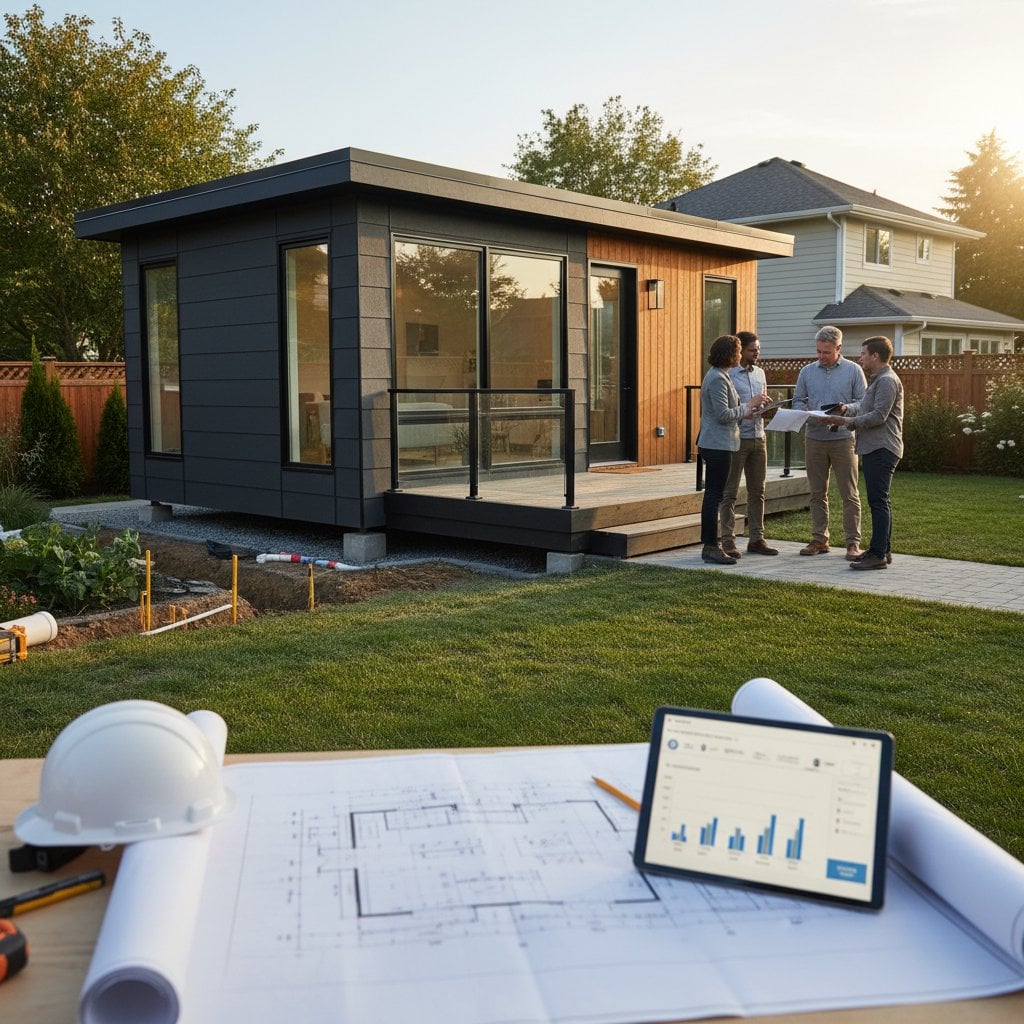The 2025 Cost Breakdown for Multigenerational Remodels
Multigenerational homes foster stronger family bonds, lower ongoing expenses, and elevate property worth. Homeowners increasingly modify their residences to house aging parents, grown children, or other relatives. This guide details the financial aspects of such transformations, offers budgeting strategies, and identifies moments to engage experts.
Reasons for the Rise in Multigenerational Remodels
Escalating home prices and evolving family dynamics render multigenerational arrangements more viable. These remodels provide autonomy for individuals alongside closeness and assistance. Homeowners view them as strategic investments that incorporate accessibility features, private areas, and eco-friendly elements. Such adaptations also enhance marketability, given the increasing preference for adaptable living arrangements in diverse locales.
Popular Layout Choices and Associated Expenses
Basement Conversion
Converting an unused basement into a livable area ranks among the favored methods for multigenerational setups.
- Typical expense range: $80,000 to $160,000
- Key components: Structural framing, thermal insulation, escape windows, water lines, and a compact cooking area
- Advantages: Leverages the current building framework
- Drawbacks: Reduced sunlight exposure and challenges with dampness prevention
To proceed, evaluate the basement for structural integrity and waterproofing needs. Consult local codes to confirm egress requirements, which often mandate at least one operable window measuring 5.7 square feet.
Garage Conversion
Repurposing a garage into an independent suite establishes a dedicated access point and secluded environment.
- Typical expense range: $100,000 to $175,000
- Key components: Thermal barriers, wallboard, water systems, heating and cooling units, and updated surfaces
- Advantages: Clear division from the primary residence
- Drawbacks: Potential loss of vehicle storage or parking capacity
Before starting, measure the garage footprint and plan for utility rerouting. Factor in costs for a new driveway if parking relocation becomes necessary.
Attached Addition
An attached addition expands the existing home with fresh interior space.
- Typical expense range: $150,000 to $275,000
- Key components: Complete residential module featuring a full kitchen and restroom
- Advantages: Tailored architectural options and superior market recovery
- Drawbacks: Extended build duration and intricate approval processes
Design the addition to align with the home's roofline for visual harmony. Obtain engineering assessments for load-bearing connections to the original structure.
Accessory Dwelling Unit (ADU)
An ADU functions as a standalone residence on the property.
- Typical expense range: $125,000 to $350,000
- Key components: Groundwork foundation, service connections, cooking facilities, and sanitation areas
- Advantages: Total seclusion and opportunities for supplementary revenue
- Drawbacks: Rigorous land-use restrictions and elevated setup expenditures
Research municipal guidelines early, as some areas cap ADU sizes at 1,200 square feet. Budget for separate metering to support potential leasing.
Handling DIY Elements Versus Expert Involvement
Suitable DIY Tasks
Experienced individuals may tackle select portions of the project:
- Surface painting, molding installation, and light finishing touches
- Elementary floor covering placement
- Yard enhancements or facade upgrades
These efforts might reduce outlays by $5,000 to $15,000, based on regional labor charges. Acquire quality tools and materials to achieve professional results without rework.
Essential Professional Services
Engage specialists for tasks that demand precision:
- Water supply and wiring installations
- Load-bearing alterations or base reinforcements
- Covering systems, climate control, or glazing assembly
- Regulatory adherence and authorization management
Expert supervision guarantees secure execution and legal conformity, vital for future transactions and liability protection. Verify credentials through state licensing boards.
Strategies to Boost Return on Investment and Streamline Processes
Executed thoughtfully, multigenerational projects yield substantial financial recovery. Consider these approaches:
- Emphasize energy conservation. Incorporate low-energy illumination, efficient climate systems, and sealed glazing. Such upgrades cut utility bills and appeal to prospective purchasers.
- Design adaptable interiors. Develop areas convertible to income-generating units or visitor accommodations for enduring benefits.
- Select resilient substances. Opt for engineered stone surfaces, water-repellent coverings, and upkeep-minimal outer layers.
- Integrate aesthetics cohesively. Harmonize novel elements with the home's established style to avoid disjointed appearances.
Remodeling data indicates that strategic ADUs and expansions recoup 60 to 80 percent of investments upon sale, particularly in competitive markets. Track material costs quarterly to adjust for inflation.
Selecting and Engaging a Contractor
Multigenerational projects encompass foundational, wiring, and piping elements subject to regulations. Involve a contractor for:
- Additions or eliminations of support walls
- Fresh service lines or groundwork
- Configurations with autonomous cooking or hygiene facilities
- Guidance through unit or land-use statutes
To choose wisely:
- Solicit a minimum of three comprehensive bids.
- Request evidence of credentials, coverage, and client endorsements.
- Examine past work images or conduct on-site reviews.
- Ensure the agreement specifies supplies, schedules, and disbursements.
Dependable professionals manage approvals and oversee evaluations, shielding against regulatory pitfalls. Schedule consultations during off-peak seasons for better availability.
Frequently Asked Questions
How does a multigenerational remodel differ from an ADU?
A multigenerational remodel modifies current areas or appends spaces within the core house. An ADU constitutes a distinct, self-sufficient structure with independent cooking and access.
Is a permit required for basement conversion?
Yes. Initiatives altering frameworks, water systems, or wiring generally necessitate approvals and examinations.
Is renting an ADU or in-law suite permissible?
Regulations differ by locality. Certain municipalities permit extended leases while limiting temporary ones. Review land-use rules prior to offering.
What level of seclusion does a multigenerational remodel provide?
Incorporating unique entries, acoustic barriers, and isolated climate zones heightens separation for residents.
Which materials endure best in busy communal residences?
Engineered wood alternatives, mineral composites, and sheen coatings offer robustness and simple maintenance.
Steps to Launch Your Project
A multigenerational remodel reshapes family interactions and fortifies asset appreciation. Begin with a thorough needs evaluation for your household. Establish a feasible financial plan using prevailing build rates. Select configurations that merge self-reliance with communal ties, and collaborate with a skilled builder versed in standards and domestic utility. Through meticulous preparation and judicious selections, construct an enduring residence that nurtures all generations with ease and effectiveness.










